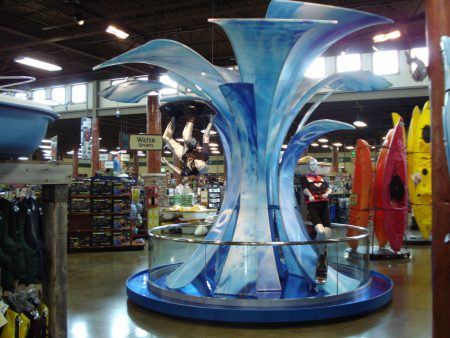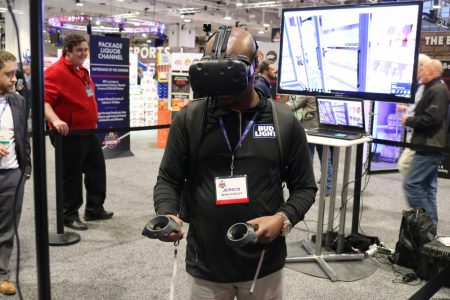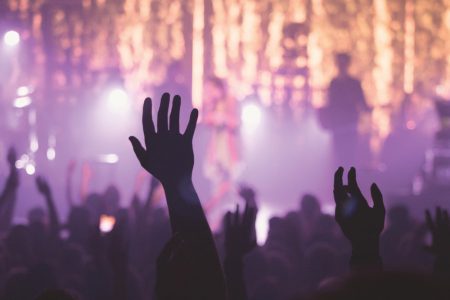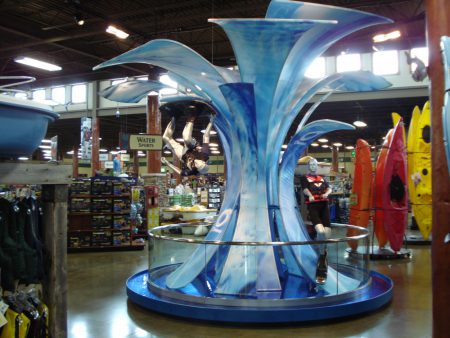Brands and marketing departments are investing more in experiential and event-based programs as the key driver of their marketing mix. So much so that branded experiences are designed to be more integrated into our everyday lives. As millennials and other notable demographics shift spending priorities from material items to experiences, the experience economy is getting larger. This has forced designers to shift their thinking into three dimensions to include the customer experience.
We talked with two of our art directors to learn more about how the experience economy has shaken up the design practice and process.
Thinking in Three Dimensions
Jamie Kidd – Art Director, Print/Interactive Design
Everything we design has to be thought of within the context of human experience. When designing for live events, you have to be obsessive about all the details because every single design works together to shape the experience. It’s like an ecosystem of design where everything kind of lives and thrives off one another. Events are also more fluid than traditional marketing media because environments change and reactions are in real-time as they move across touch points. We are learning more about the human experience and their emotional journey as they interact with brand activations, making experience design thinking the new norm.
Jake Strelow – Creative Director, Environmental Design
As designers, we approach our work with the audience’s journey in mind and make intentional choices about the layout of space, its color, form, materials and lighting, which all contribute in a crucial way to the experience, ultimately encouraging them to engage or not. As humans, we cannot help but be affected by the world we walk through, that’s why we hike nature trails instead of outlet malls, it makes us feel a certain way. Building out a brand experience in three dimensions is a way for brands to deliver immersive environments that provide consumers with a feeling as they interact with the space – you notice sometime’s it’s not even about the product themselves.
The growth of experiential has followed in the footsteps of great retail brands like Nike, Apple, and LuLu Lemon who create shopping experiences when you walk through their stores. We want to design thoughtful interactive environments that can provoke a desired and authentic emotional response from the audience when physically interacting with the brand.

Welcome Back to the Real World
Jake Strelow – Creative Director
A person’s time and attention are finite resources. In a global marketplace, the competition for attention is fierce. When the average consumer can retreat into an unending world of media available on their smartphones, life in the physical world can seem dull in comparison. However, the physical world offers things the virtual world cannot – the communal thrill of a sporting event or the vaulted wonder of a cathedral. The world of marketing events – trade shows, activations, and more – mostly falls short of the grandeur of Notre Dame or the intensity of the Final Four but it can nonetheless awe, spark curiosity and bring joy. In a physical space, we can play with the form, color, material and lighting to draw someone into a unique environment to surprise or delight, engender a desire to explore or generate a feeling of calm and safety, or even create intimacy. It’s exceptionally hard to recreate that in the digital format.
We can also play with the existing physical world to create something new, which invites fresh perspective around objects that are familiar – like a projection on a famous landmark. These little stunts help us to feel something new in response to something that’s old. The challenge of activating or building out these experiences is translating a brand’s identity into the real, dimensional world so the consumer has an emotional response and (hopefully) gets something positive from interacting with the brand.
Jamie Kidd – Art Director
I wholeheartedly agree that nothing can compare to the physical world or shared experiences. There’s nothing we can do from a design perspective that can recreate the exhilaration you feel when you’ve actually climbed a mountain. But having said that, it’s our job as designers to play a key role in how we marry technology with our physical world to create a strong emotional response. We are surrounded by technology, incorporating new trends at events like gamification, virtual reality, augmented reality, 3D scanner/printer or holographics are expected. But the human experience has to be at the heart of the strategy. With a lot of the events and experiences we design, we try to inject interplay between technology and the physical space to create deeper emotional connections that support the overall journey.

Designing for a Virtual Audience
Jamie Kidd – Art Director
In 2017, you have to assume that your live event is going to be broadcasted. If someone takes out their phone to shoot a video or snap a photo to share with friends, that’s a good indication that they are trying to commemorate a fun experience. With live streaming at events becoming more prevalent, designers need to understand what the event looks and feels like from all angles, especially if the broadcast is driven by the brand. It is imperative to design experiences for the audience physically present, but we also have to consider the experience of the remote, virtual audience. So while your camera guy has the perfect hero shot lined up of the stage, the person in the 15th row stage left is starting a Facebook Live stream that’s being broadcasted to all her friends. Designers have to approach experience design from every angle the way a producer would.

Jake Strelow – Creative Director
When designing and building out environments for special events, activations or trade shows, I try to create intentional spaces where these types of interactions (that Jamie mentioned) can take place “organically.” While it is important for the attendee to drive the experience autonomously, within that framework we can try to create opportunities where desired behavior is the more likely outcome. So if the desire is to have attendees take photos and share their experience, we want to create space where that is the probable result – the simplest example would be a step and repeat or a photo booth area.
The most important aspect of experiential design is the understanding that forming relationships and having shared experiences is the most powerful tool we have as marketers. Designing a memorable experience will last longer in the mind of your audience than a throw away tag line or a fleeting image. You are asking for more of an investment from the consumer in terms of time, so pay it off with a thoughtfully designed experience that will stick with them.
Want to learn more about Experience Design, talk to us or work with our designers to start planning your next live experience.


